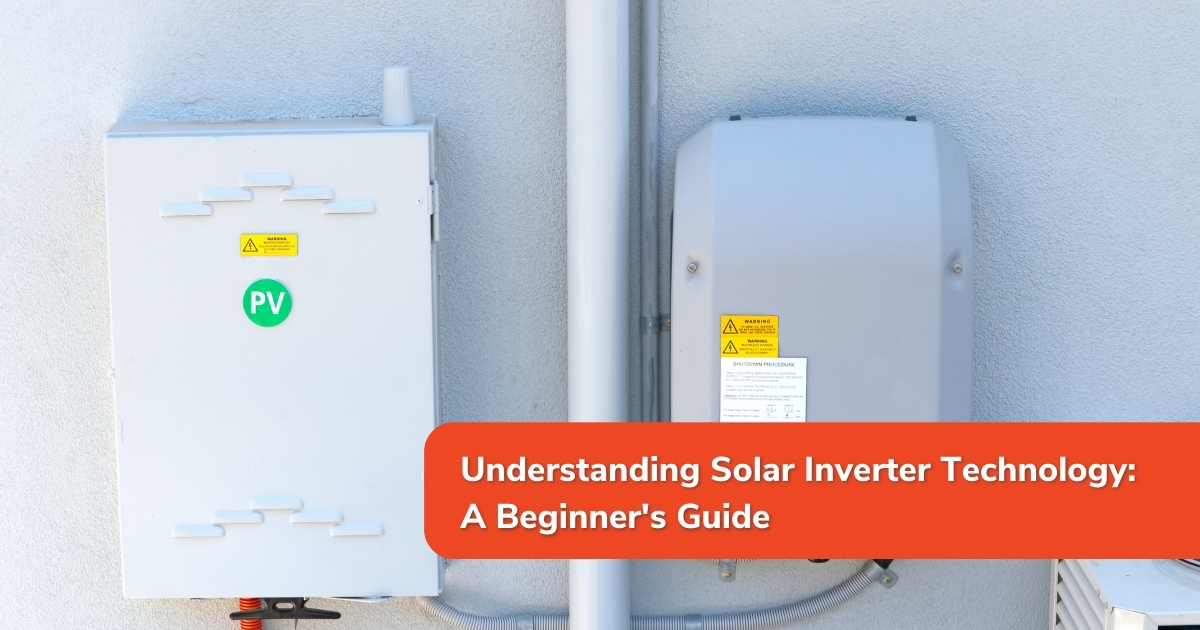Understanding Solar Inverter Technology: A Beginner's Guide

Solar energy has rapidly become a cornerstone of renewable energy systems worldwide, particularly in sun-rich countries like Australia. At the heart of the solar power system lies an unsung hero—the solar inverter. This essential component plays a pivotal role in transforming solar energy into a form that powers homes and businesses. For those new to the solar energy realm, understanding inverter technology is crucial. This guide aims to demystify solar inverters, exploring their function, types, and significance in harnessing the sun's power.
What is a Solar Inverter?
A solar inverter is a critical device in any solar power system. Its primary function is to convert the direct current (DC) electricity generated by solar panels into alternating current (AC) electricity. AC electricity is the standard electrical form used in homes and on the power grid, making inverters essential for integrating solar energy into our daily lives.
The Role of Solar Inverters
Beyond conversion, solar inverters also play several key roles in a solar energy system. They ensure that the solar panels are operating at their optimal power output, monitor system performance, and provide important safety mechanisms to protect the system and your home. In essence, inverters act as the brain of the solar power system, orchestrating its efficient and safe operation.
Types of Solar Inverters
The solar inverter market offers various types, each suited to different solar energy systems and user needs. Here’s a brief overview of the most common types:
String Inverters
String inverters are the most traditional and widely used type. They connect to a series (or "string") of solar panels. They're cost-effective and straightforward for installations where solar panels are exposed to similar lighting conditions. However, they might not be the best choice for roofs with shading issues or multiple orientations, as the performance is based on the weakest panel in the string.
Microinverters
Microinverters represent a more advanced technology, with an individual inverter attached to each solar panel. This setup allows each panel to operate independently, maximising energy production even if some panels are shaded. Microinverters are ideal for complex installations but come at a higher upfront cost.
Hybrid Inverters
Hybrid inverters combine the functionality of a traditional inverter with a battery charger, making them perfect for systems designed for energy storage. They are an excellent choice for those looking to maximise solar usage, store excess energy for later use, or have backup power during outages.
Power Optimisers
While not inverters themselves, power optimisers work in conjunction with string inverters to improve system efficiency. They are installed at each panel to optimise the DC power before it's sent to the inverter for conversion. This technology offers a middle ground between string inverters and microinverters, enhancing performance without the high cost of microinverters.
Choosing the Right Solar Inverter
Selecting the right inverter is as crucial as choosing the right solar panels. The choice depends on several factors, including your solar system's size, the complexity of your roof, shading issues, and whether you plan to include battery storage. Consulting with a professional solar provider can help determine the best inverter type for your specific situation.
Efficiency and Reliability
When selecting an inverter, it's important to consider both efficiency and reliability. An efficient inverter will convert a higher percentage of the DC electricity into AC, maximising your system's output. Reliability ensures that your system operates smoothly over its lifespan, minimising downtime and maintenance costs.
Warranty and Support
The warranty and support offered by the inverter manufacturer are also key considerations. A longer warranty period and accessible customer support can provide peace of mind and protect your investment in the long term.
Installation and Maintenance
Professional installation is recommended for all types of solar inverters to ensure safety and compliance with local regulations. Once installed, inverters require minimal maintenance, but regular check-ups can help detect any issues early, prolonging the system's life and ensuring ongoing efficiency.
Monitoring Your System
Many modern inverters come with monitoring systems that allow you to track your solar system's performance in real-time, often through a smartphone app. This feature not only lets you see how much electricity you're generating but can also alert you to any performance issues that may arise.
Environmental Impact and Future Trends
Solar inverters play a crucial role in the environmental impact of solar energy systems. By maximising the efficiency of solar electricity conversion, they contribute to reducing reliance on fossil fuels and lowering carbon emissions. As technology advances, we can expect to see even more efficient and smarter inverter solutions, including those with integrated artificial intelligence (AI) for optimal performance management.
The Future of Solar Inverter Technology
The future of solar inverter technology is promising, with ongoing innovations aimed at increasing efficiency, reliability, and integration with smart home technologies. Developments in battery storage integration, grid interaction capabilities, and software for enhanced monitoring and control are set to revolutionise how solar energy systems operate.
Conclusion
Understanding solar inverter technology is fundamental for anyone considering a solar energy system. Inverters not only convert solar power into usable electricity but also enhance the system's overall performance and safety. With the variety of inverter types available, it's essential to choose one that fits your specific needs, taking into account your system's size, the complexity of installation, and future expansion plans. As the solar industry continues to evolve, the role of inverters will undoubtedly expand, driving the efficiency and integration of solar energy into our energy mix. Embracing this technology is a step towards a more sustainable and energy-independent future.
%20(1).png?width=265&height=96&name=www.smartenergyanswers.com.auhs-fshubfsSmart%20Energy%20Answers%20Logo%20(HIRES)%20(1).png)

.png?width=514&height=121&name=Tesla%20Powerwall%203%20(new).png)







